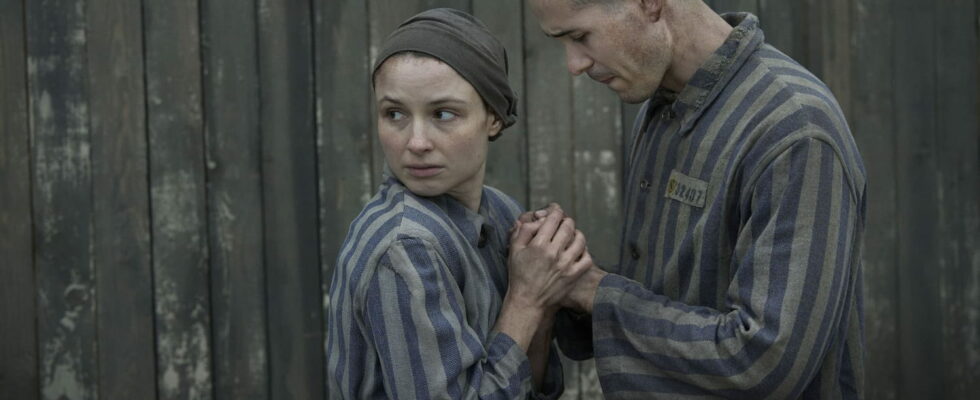“The Tattooist of Auschwitz” traces the story of Lale Sokolov, on the occasion of the 80th anniversary of the liberation of the extermination camp. Is the new M6 series inspired by a true story?
The Tattooist of Auschwitzthe new event series from M6, has been scheduled from this Wednesday, January 22, 2025, at 9:10 p.m. Based on a bestseller sold millions of copies, this 6-episode mini-series marks on television the 80th anniversary of the liberation of the Auschwitz extermination camp on January 27, 1945, where more than of 1.1 million deportees, mainly Jews.
The history of Auschwitz tattoo artist begins years after the events of 1945. In Melbourne, in 2003, Lale Sokolov, an 87-year-old Holocaust survivor, met a writer he had hired to write his biography. It evokes both the traumatic and fractured memories of the worst years of his life, when he was deported to the Auschwitz camp, but also his meeting with the love of his life.
Lale Sokolov (Harvey Keitel) remembers the beginnings of the persecution against the Jews in 1942, in Slovakia, then recounts his extraordinary destiny one thing leading to another. Because after his arrival at the camp, he will quickly be requisitioned by the Nazis to become a tattoo artist. He must then mark the registration numbers on the arms of the other deportees…

The Tattooist of Auschwitzthe true story of Lale Sokolov
The series The Tattooist of Auschwitz thus alternates between the 2000s and flashbacks to the 1940s, where young Lale is played by Jonah Hauer-King (The Little Mermaid). And if the M6 series brings an element of fiction, it is indeed inspired by a double true story: Lale Sokolov, born under the name of Ludovic Eisenberg in 1916, in the kingdom of Hungary (today Slovakia ), actually existed and truly told its story to New Zealand writer Heather Morris in the 2000s.
Ludovic Eisenberg will be deported to Auschwitz in April 1942, because he is Jewish. But speaking several languages, he will be spotted to become “Tätowierer”, the official tattooist of the camp between 1942 and 1945. It is in these terrible circumstances that he will meet Gita, a young Czechoslovak who arrived in Birkenau during this period. “I tattooed her number on her arm, she tattooed it in my heart,” Lale Sokolov summed up decades later. Survivors of the camps, the couple met again after the war and got married. He then moved to Australia where he remained for more than 50 years, until Gita’s death in 2003.

A key testimony that does not escape criticism
A few months later, Lale decided to tell his story to author Heather Morris, before passing away in 2006. The work, titled “The Tattooist of Auschwitz” (City) like the series, will be published in 2018 and will be sold 3 million copies worldwide. Immersed in the hell of the extermination camp, the book also sheds light on these few deportees, chosen to “do the dirty work in place of the Nazis”, in other words to mark their companions in misfortune like cattle. A job which will earn them less harsh working conditions than the other prisoners, but also tenacious resentment, in the camp and outside after their release. Few of them will decide to testify, unlike Lale Sokolov.
Be careful though before jumping into the series The Tattooist of Auschwitz : the book from which it is taken contains assumed historical inaccuracies, but also factual errors which will earn it disapproval from the Auschwitz memorial. The latter will particularly regret that no camp specialist was involved in the writing of the work, essentially based on the undoubtedly imprecise memories of the main character. Attempting to tell the horror of the camps in fiction and even placing a romance there is also subject to controversy.
As the newspaper La Libre Belgique will report in 2020, author Heather Morris will defend “a story based on the memories of a single man. If this can push readers to be more interested in the terrible events of Holocaust, then this book will have succeeded in granting Lale’s last wishes.”
